As organizations scale, work naturally gets distributed across more teams, tools, and time zones — making alignment and clarity harder to maintain. This is where enterprise collaboration steps in, unifying information, workflows, and increasingly, AI-driven processes so everyone moves forward together.
In fact, a study by Forrester Consulting on behalf of Vonage found that ineffective internal collaboration has real business consequences: 49% of leaders reported it hurt customer experience, 40% said it reduced employee productivity, and 38% said it even cost them business.
In this guide, we’ll explore what enterprise collaboration looks like in action, the benefits you can expect, and how to implement it effectively to build a more connected, agile organization.
Try monday work managementKey takeaways
- Enterprise collaboration breaks down silos and accelerates decision-making by connecting teams across departments, locations, and levels through shared platforms and real-time information flow.
- Organizations typically see 20-30% productivity gains within the first year by eliminating administrative waste, improving resource allocation, and enabling faster execution on critical projects — with AI automations driving even greater efficiency.
- Successful implementation requires starting with pilot programs, providing comprehensive training, and measuring both time savings and employee satisfaction to build momentum across your organization.
- Modern platforms must balance security with accessibility through granular permissions, audit trails, and seamless integrations that enhance existing systems without creating new barriers.
- Customizable workflows, intelligent automation, and AI-powered features in monday work management adapt to your unique processes, helping teams focus on meaningful work instead of coordination tasks.
What is enterprise collaboration?
Enterprise collaboration is when employees across different departments, locations, and levels work together using shared platforms and processes — a market projected to expand to $121.47 billion by 2030. This means your marketing team in New York can seamlessly coordinate with operations in London and finance in Singapore — all working toward the same business goals through effective enterprise project management.
Think of it as the difference between a group text and a command center. Basic team collaboration platforms handle simple coordination. Enterprise collaboration orchestrates complex work across the organization, using AI to streamline communication, automate updates, and surface insights instantly.
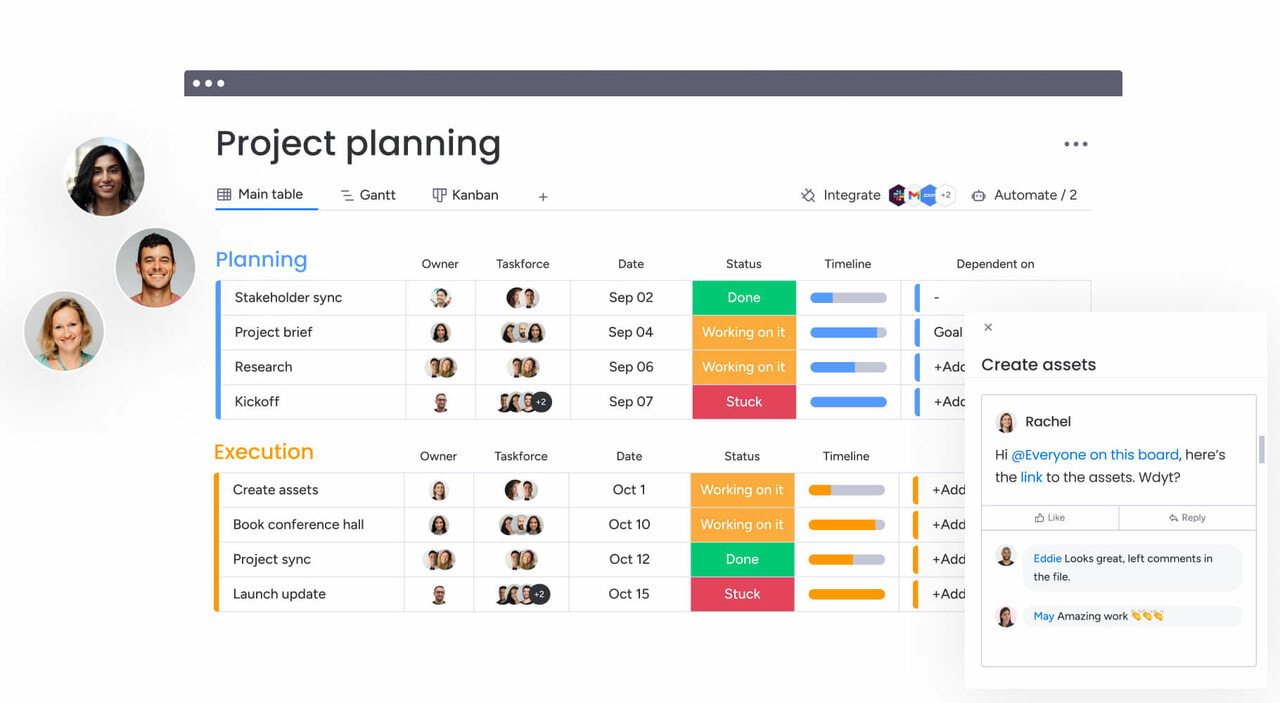
Types of enterprise collaboration systems
Enterprise collaboration systems organize around who’s involved and how information flows. Understanding these types helps you choose the right approach for your specific needs — especially as AI capabilities continue to evolve and shape new ways of working.
Internal enterprise collaboration
Internal collaboration connects employees within your organization. It breaks down the walls between departments and creates powerful cross-functional collaboration across all business functions.
Here’s what makes internal collaboration work:
- Cross-departmental workflows: Marketing, sales, and product teams share the same project views and updates.
- Centralized information: Everyone accesses the same source of truth for project status and priorities.
- Unified communication: Conversations happen in context, not scattered across email threads.
- Connected goals: Individual work links directly to company objectives.
With monday work management, this is made possible through customizable workflows and AI-powered automations that adapt to how your teams actually work. You build the processes that fit your business, not the other way around.
External enterprise collaboration
External collaboration extends your workflows to include clients, vendors, and partners. You maintain control while giving outside stakeholders the access they need through effective stakeholder management.
Key components include:
- Client project management: Customers see progress and provide feedback without accessing internal data.
- Vendor coordination: Suppliers integrate into your workflows while you maintain oversight.
- Partner integration: Joint initiatives move forward with clear boundaries and permissions.
- Contractor oversight: External teams work within your processes without compromising security.
7 benefits of enterprise collaboration software
Enterprise collaboration delivers measurable impact across your organization. These benefits compound as more teams adopt collaborative practices.
1. Break down organizational silos
Silos happen when departments can’t see each other’s work. Marketing doesn’t know what product is building. Implementing project management for sales ensures that the sales team knows what support is hearing from customers.
Enterprise collaboration creates shared visibility. Teams see how their work connects to other initiatives and identify opportunities to help each other succeed — while AI surfaces cross-team dependencies and flags potential bottlenecks before they slow you down.
2. Accelerate decision-making
How long does it take to get input from five different stakeholders? With enterprise collaboration, decisions happen faster because information flows in real time — and AI-powered notifications ensure the right people are looped in instantly.
No more waiting for reports or scheduling meetings to gather perspectives. Decision-makers access what they need instantly, with AI summarizing updates and surfacing actionable next steps.
3. Boost team productivity
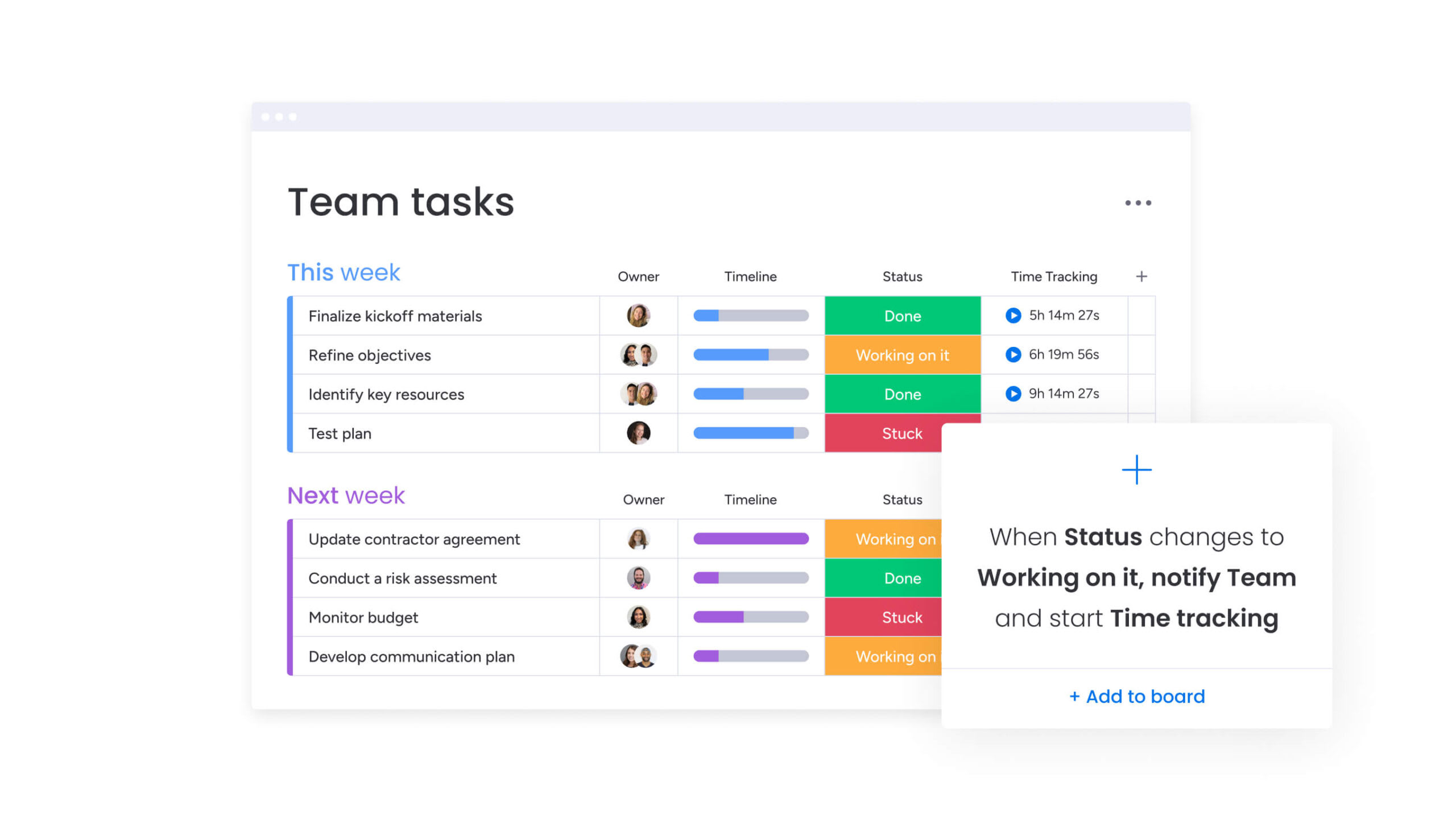
Your teams waste hours every week on administrative work, and this matters because 53% of business leaders rank improving operational efficiency and productivity as a top goal. Yet without effective collaboration, productivity suffers, as 40% of leaders admitted in Forrester’s 2024 study.
With smart automation, monday work management takes this further, handling coordination tasks automatically so your teams focus on work that matters.
4. Optimize resource management
Can you see who’s overloaded and who has capacity? Enterprise collaboration provides real-time visibility into workloads across your organization.
This transparency helps you balance resources strategically and ensure critical projects get the support they need through enterprise resource planning. AI-powered analytics can even predict future bottlenecks and recommend optimal resource allocation.
5. Drive innovation across teams
Innovation happens when different perspectives collide. Enterprise collaboration connects people who might never interact otherwise.
A developer’s insight might solve a customer service problem, or a finance observation could spark a product feature. These connections multiply when collaboration is built into how you work.
6. Increase employee engagement
People engage more when they understand how their work impacts the bigger picture. Enterprise collaboration shows everyone how their contributions drive organizational success.
Employees see the results of their efforts and feel more connected to company goals, which is critical, as research shows that employees who understand how success is measured are 2x as likely to feel motivated, according to The world of work report from monday.com.
7. Build organizational agility
Markets change. Priorities shift. Can your organization adapt quickly? Enterprise collaboration creates the flexibility to form new teams, reallocate resources, and pivot strategies without losing momentum.
Monday work management supports this business agility through flexible configurations that evolve with your needs, functioning as an enterprise workflow management software solution. AI features help teams adapt even faster — by recommending workflow tweaks and automating responses to change.
Key features of enterprise collaboration platforms
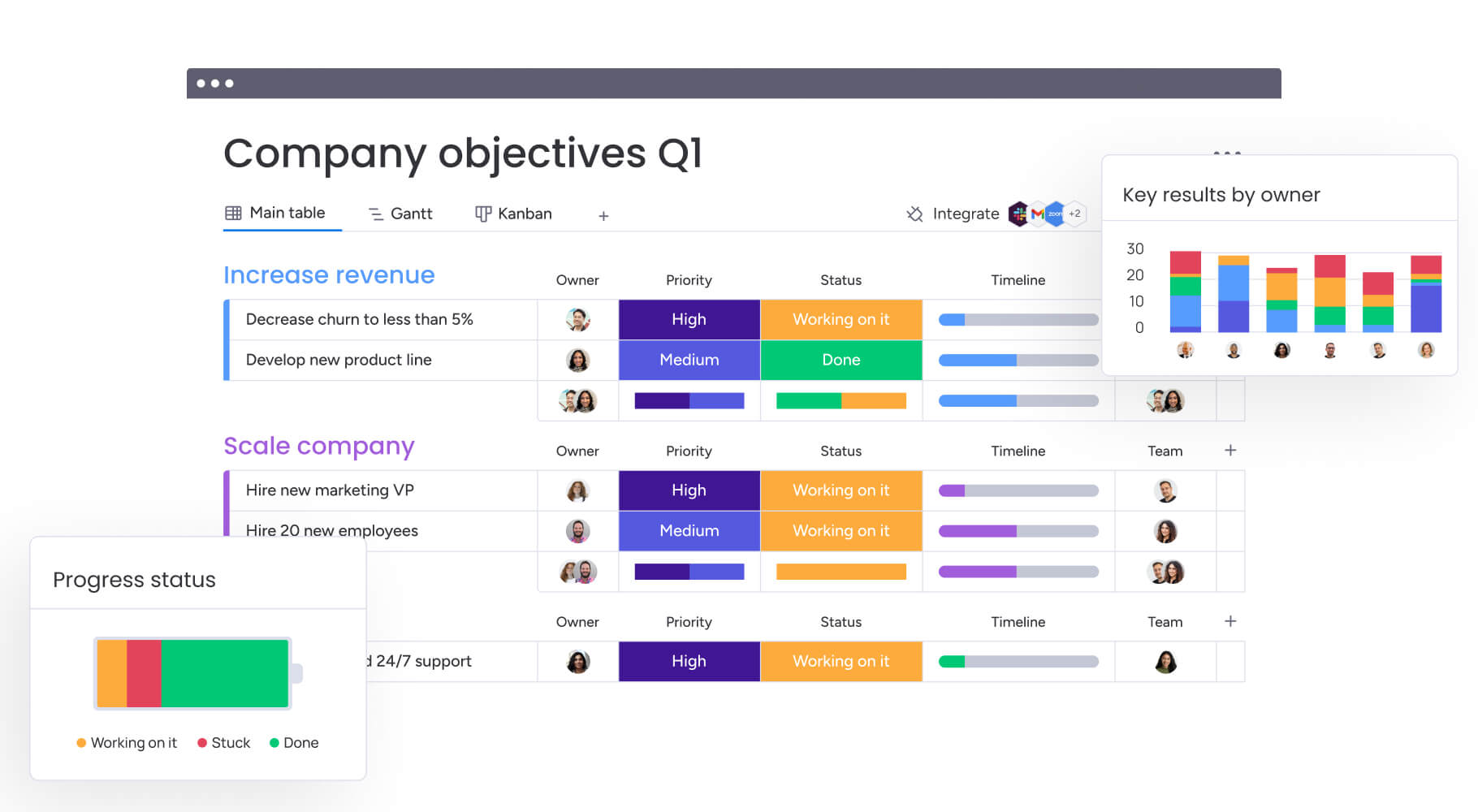
Modern collaboration platforms combine multiple capabilities into unified systems. This all-in-one approach ensures your teams can collaborate, coordinate, and execute work efficiently without constantly switching between disconnected apps. Here’s what to look for:
Try monday work managementHow to overcome enterprise collaboration challenges
Enterprise collaboration isn’t without its hurdles. From breaking down entrenched silos to encouraging widespread adoption and maintaining security, organizations face real obstacles as they scale collaborative efforts. The good news? With the right strategies and tools, these challenges can become opportunities to strengthen alignment and accelerate results.
Eliminating information silos
Silos form when departments use different systems and don’t share information. Breaking them down requires both technology and culture change.
Start by creating shared dashboards that show cross-departmental metrics. When teams see how their work impacts others, collaboration becomes natural. Monday work management facilitates this through tailored workflows that connect departments while maintaining data consistency.
Driving user adoption
People resist change, especially when they’re comfortable with current processes. Successful adoption requires showing clear value quickly. Run pilot programs that demonstrate early wins. Let successful teams share their experiences. Build momentum through peer advocacy rather than top-down mandates.
Managing organizational change
New collaboration systems often require new ways of working. Support teams through this transition with clear communication and comprehensive training—a must, given that 60% of employees globally believe better training would improve change management. This approach ensures your solution truly aligns with employee needs and paves the way for smoother adoption.
Create feedback loops to capture what’s working and what isn’t. Adjust your approach based on real user experiences.
Ensuring data security across teams
More collaboration means more people accessing information, and adopting business process management keeps data secure without creating barriers. How do you maintain security without creating barriers?
Enterprise-grade security with role-based access and full activity logs ensures sensitive data stays protected while collaboration remains seamless. Establish clear governance policies, and define who can access what and under which circumstances.
5 steps to implement enterprise collaboration platforms
Implementing enterprise collaboration isn’t just about rolling out new enterprise software — it’s about creating a foundation for how your teams work together at scale. A thoughtful, step-by-step approach ensures your platform delivers immediate value, drives adoption, and sets you up for long-term success. Here’s how to get started:
Step 1: Assess your collaboration needs
Map your current workflows. Where do handoffs fail? Where does communication break down? What takes too long? Interview stakeholders across departments. Their pain points guide your requirements and help prioritize features.
Step 2: Select your enterprise collaboration solution
Match platform capabilities to your identified needs. Consider functionality, scalability, and integration options. Test key features through proof-of-concept projects. Talk to reference customers about their real-world experiences.
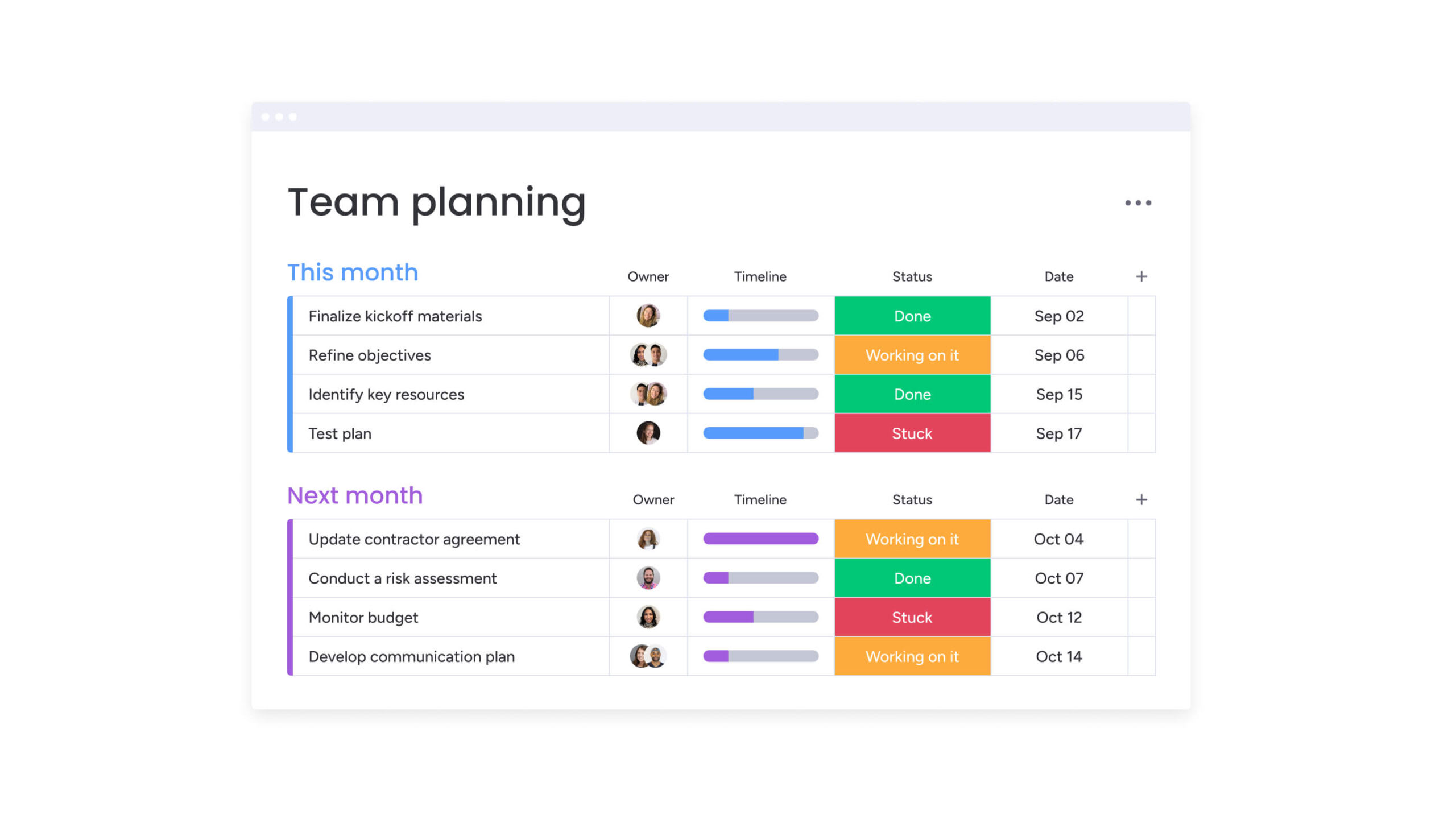
Step 3: Launch pilot programs
Start small with willing teams. Define clear success metrics and timelines. Provide dedicated support during pilots. Collect feedback systematically and use it to refine your approach.
Step 4: Enable teams with comprehensive training
Go beyond feature training. Teach collaborative work practices and best practices for your industry.
Develop internal champions who can support their peers. This creates sustainable expertise within your organization.
Step 5: Track success metrics
Measure both quantitative improvements (time saved, projects completed) and qualitative gains (employee satisfaction, collaboration quality).
Communicate results regularly. Celebrate wins and address challenges transparently.
Enterprise collaboration examples across industries
Enterprise collaboration isn’t just for tech giants — it’s transforming industries as diverse as manufacturing, healthcare, finance, and retail. The following real-world examples show how organizations are using collaboration platforms to break down barriers, connect teams, and deliver better results, no matter their size or sector.
Manufacturing collaboration
Manufacturers juggle global supply chains across time zones. Collaboration platforms connect design, production, and suppliers in real time. For example, AI-powered production monitoring helps teams catch defects early and mobilize cross-functional responses, reducing costly delays and improving quality consistency.
Healthcare team coordination
Healthcare providers must coordinate patient care across multiple departments. Collaboration platforms enable secure communication that meets HIPAA requirements, while integrations with electronic health records create a single patient view. This ensures treatment plans are accessible to all caregivers, reducing errors and improving outcomes.
Financial services integration
Banks and financial firms manage thousands of client touchpoints across onboarding, compliance, and service delivery. Collaboration platforms streamline workflows across teams, with audit trails and permissions ensuring compliance. Some institutions use AI to automatically flag anomalies in client records, balancing accessibility with regulatory oversight.
Retail operations alignment
Retailers coordinate inventory, marketing, and customer service across both online and in-store channels. Collaboration platforms provide real-time visibility into stock and campaign progress, helping avoid stockouts during peak seasons. AI-powered demand forecasting adds another layer, aligning buying and marketing teams around accurate predictions.
Try monday work managementScale your business with enterprise collaboration
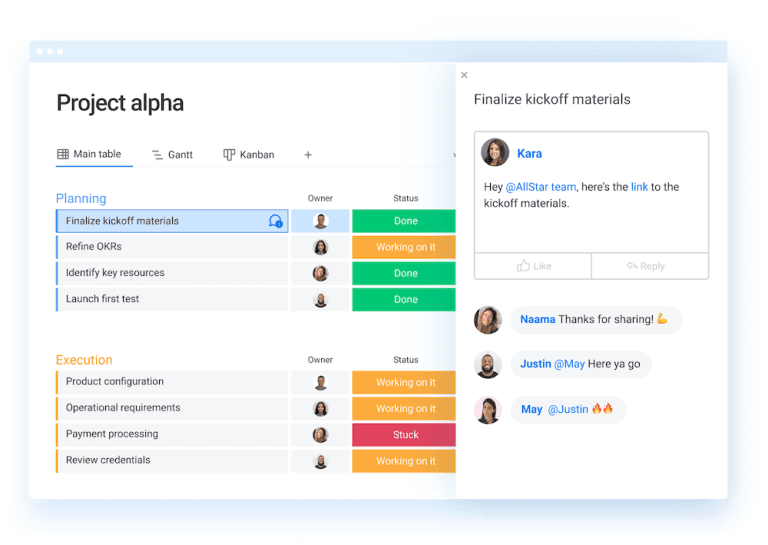
Enterprise collaboration isn’t just about communication — it’s about transforming how work gets done. The right platform enables growth without adding complexity, and this is where monday work management shines. Get the flexibility your growing organization needs, build workflows that reflect your unique processes, and scale confidently knowing your collaboration infrastructure can handle whatever comes next.
Ready to see what coordinated execution looks like?
Try monday work managementFAQs
What is the difference between enterprise collaboration and team collaboration?
Enterprise collaboration operates across your entire organization, connecting multiple departments and handling complex permissions. Team collaboration focuses on single teams or projects with simpler coordination needs.
How much does enterprise collaboration software cost?
Enterprise collaboration software typically costs $15-30 per user monthly for comprehensive features. Total costs include licensing, integration, training, and ongoing support.
What is the typical ROI of enterprise collaboration platforms?
Organizations typically see 20-30% productivity gains within the first year through faster decision-making and reduced administrative work. ROI includes both cost savings and revenue acceleration from improved execution.
How does AI improve enterprise collaboration?
AI automates routine coordination tasks, surfaces insights from collaboration data, and helps allocate resources intelligently. Features like automated categorization and predictive analytics optimize collaborative processes continuously.
Which enterprise collaboration platform is best for remote teams?
The best platform for remote teams provides integrated communication, project management, and asynchronous collaboration features. Look for strong mobile capabilities and reliable performance across time zones.
Can enterprise collaboration systems integrate with existing software?
Modern platforms offer extensive integration through APIs and pre-built connectors. You maintain existing technology investments while adding collaborative workflows that span multiple applications.
